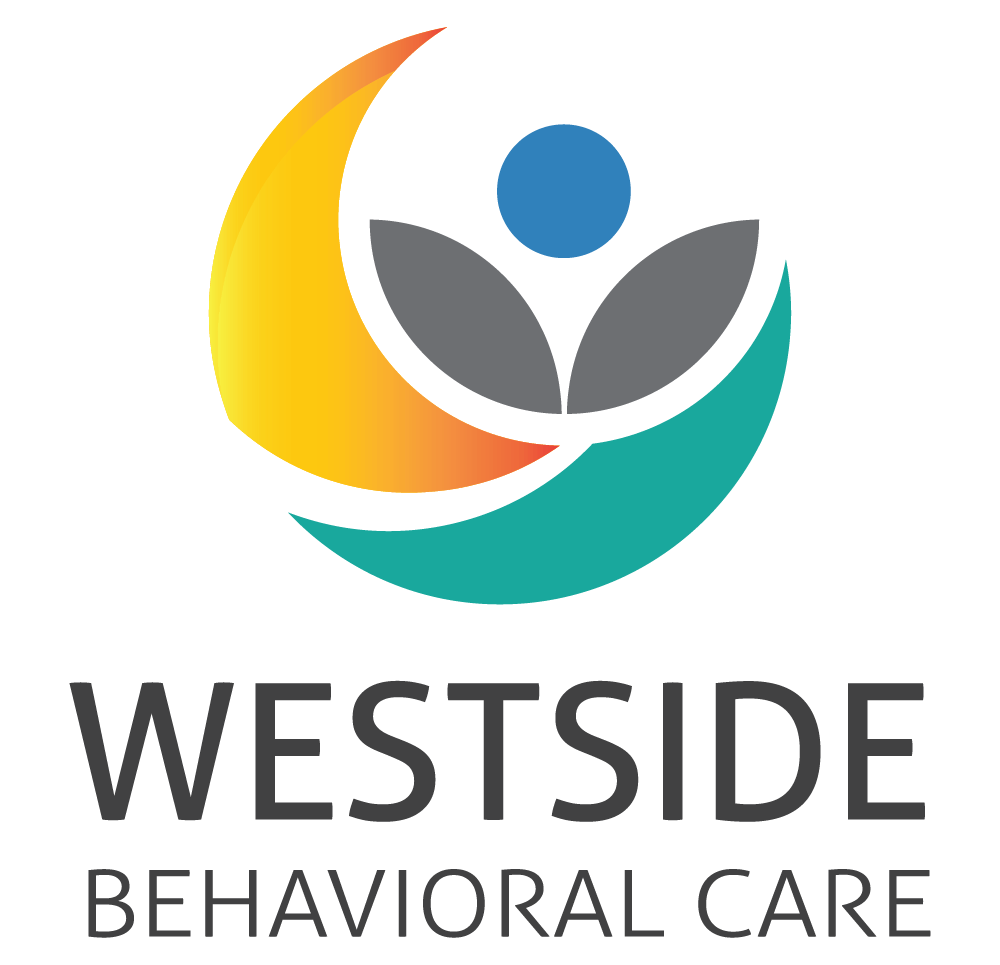What is Obsessive-Compulsive Disorder (OCD)?
What is Obsessive-Compulsive Disorder (OCD)?
 Obsessive-Compulsive Disorder (OCD) is one of various anxiety disorders. The U.S. Department of Health & Human Services defines OCD as “a common, chronic, and long-lasting disorder in which a person has uncontrollable, recurring thoughts (obsessions) and/or behaviors (compulsions) that he or she feels the urge to repeat over and over.” Obsessions are unwanted, intrusive thoughts, impulses or mental images that prompt anxiety. Compulsions are behaviors an individual with OCD feels compelled to do in to attempt to get rid of the obsessions. Almost all individuals have intrusive thoughts sometimes, but a person with OCD experience them more frequently and feel extreme distress if they don’t act on the impulses.
Obsessive-Compulsive Disorder (OCD) is one of various anxiety disorders. The U.S. Department of Health & Human Services defines OCD as “a common, chronic, and long-lasting disorder in which a person has uncontrollable, recurring thoughts (obsessions) and/or behaviors (compulsions) that he or she feels the urge to repeat over and over.” Obsessions are unwanted, intrusive thoughts, impulses or mental images that prompt anxiety. Compulsions are behaviors an individual with OCD feels compelled to do in to attempt to get rid of the obsessions. Almost all individuals have intrusive thoughts sometimes, but a person with OCD experience them more frequently and feel extreme distress if they don’t act on the impulses.
Common OCD Variations
There is an infinite amount of OCD subtypes, however, most individuals diagnosed with OCD fall into one of the following variations:
Checking
Individuals who experience this subtype perform checking rituals to relieve distress from events that may not be as severe, may not have happened or could have happened as typical.
-
- Common obsessions of Checking OCD:
- Doubt of not having locked home doors
- Anxiety of accidentally leaving a household appliance turned on, such as a stove or oven
- Fear of leaving water taps on, on accident
- Panic of losing personal items, such as a wallet or purse
- Fear of having written or said something incorrectly or inappropriately
- Fear of a disaster taking place
- Common obsessions of Checking OCD:
-
- Common compulsions of Checking OCD:
- Repeatedly checking locks on car, home, room and/or office
- Repeatedly checking one’s stove and oven to ensure they are turned off
- Repeatedly checking faucets to ensure they are off
- Repeatedly ensuring personal items are with them
- Repeatedly seeking reassurance that what was said/sent was appropriate and accurate
- Common compulsions of Checking OCD:
Cleaning and Contamination
These individuals may be separated between those who fear harm through contamination and those who feel discomfort through contamination without fear of harm.
-
- Common obsessions of Cleaning and Contamination OCD:

- Fear of being contaminated with germs that may cause harm to oneself or a loved one
- Worry of contaminating others with own germs
- Common obsessions of Cleaning and Contamination OCD:
-
- Common compulsions of Cleaning and Contamination OCD:
- Excessively washing of hands in order to feel clean from dirt and germs
- Sometimes in a ritualistic manner by washing each individual finger/fingernail
- May not turn off tap with bare heads, will instead use paper towel or other item
- Excessively engaging in ritualized toothbrushing, grooming or bathing
- Excessive use of hand sanitizer in between handwashing
- May wear gloves, tissues or other items to open doors or touch items in public
- Avoiding touching others, including during handshakes
- Avoiding going to certain places due to fearing contamination
- Common compulsions of Cleaning and Contamination OCD:
Symmetry and Ordering
Individuals with this subtype experience uncomfortable obsessions and perform compulsions surrounding the way items are arranged and/or with things that appear asymmetrical. These individuals may perform rituals because they receive sudden urges or just because they “feel right.”
-
- Common obsessions of Symmetry and Ordering OCD:
- Discomfort when confronted about items being misaligned or out of place
- Fear something harmful may happen to oneself or a loved one if objects aren’t perfectly organized and/or even
- Ex: pillows at home and pencils at work
- Extreme desire for symmetry and experience intense anxiety over asymmetry
- Scratching both sides of face an even amount of time/space
- Waking with the same pressure each time they take a step
- Holding objects in both hands with the same amount of pressure
- Overreaction to items being or seeming asymmetrical
- Common obsessions of Symmetry and Ordering OCD:
-
- Common compulsions of Symmetry and Ordering OCD:
- Arranging objects symmetrically and in a specific order
- Ex: arranging shoes in a closet by color and cans in a pantry by alphabetical order
- Avoiding certain areas/rooms that contain symmetrical lines and geometric shapes that may cause an urge to trace with their eyes
- Ex: tiles in a restroom
- Organizing objects so they are evenly spaced out from one another
- Repeating tasks until there are no more visible asymmetries or imperfections
- Ex: rewriting words so they have the exact same style, rewriting sentences to have the same number of letters on each line
- Completing task the same amount on one side as the other to “even up” behavior
- Ex: scratching other side of face the exact amount of time as the other, tapping the same amount on one side of the table as the other
- Organizing objects to a specific order and acquiring more if there “aren’t enough” or getting rid of some if there are “too many” to get them “just right”
- Arranging objects symmetrically and in a specific order
- Common compulsions of Symmetry and Ordering OCD:
Hoarding
Individuals with this OCD subtype may carry out compulsions caused by the fear of something harmful happening to oneself or a loved one if something is thrown out and/or may feel emptiness after getting rid of an object. They may also be completing tasks in accordance with a “magic number.”
-
- Common obsessions of Hoarding OCD:
- Fears that something harmful may happen to oneself or loved ones if something is discarded
- Fear of running out of items if too many are thrown away
- Experience a feeling of emptiness or incompleteness if something is thrown away
- Individuals may keep items they do not use regularly because of memories associated with them or because they may need them in the future
- Ex: childhood toys
- Individuals may keep items they do not use regularly because of memories associated with them or because they may need them in the future
- Intense feelings to abide by a “magic number”
- Ex: buying items in multiples of 6 because that is the individuals “magic number”
- Severe anxiety when attempting to get rid of items although they may feel embarrassed of possessions
- Indecisiveness on what items to keep and where to categorize/organize them
- Fears related to contamination
- Individuals may not pick up items from the floor because they may be contaminated
- Individuals may become suspicious that others are touching their possessions
- Common obsessions of Hoarding OCD:
-
- Common compulsions of Hoarding OCD:
- Purchasing all of the items that a person has touched in a store to keep others from being contaminated
- Saving nonessential items that won’t be needed in the future
- Ex: opened mail, newspapers, clothing that no longer fits, old food
- Purchasing items in multiples to abide to a person’s magic number
- Collecting items in an isolated area because they are contaminated and should not be touched by others
- Common compulsions of Hoarding OCD:
Intrusive Thoughts
This subtype may also be known as Purely Obsessional OCD (Pure O). Individuals with this subtype engage in hidden, mental compulsions that typically surround romance, sexuality, violence, health, faith and responsibility.
-
- Common obsessions of Intrusive Thoughts OCD:
- Fear of harming oneself, a loved one or a stranger
- Fear of not being loved or good enough by/for your partner
- Fear of having a different sexuality than the one you currently identify with
- Fear of offending a god, your religion or your religious community
- Common obsessions of Intrusive Thoughts OCD:
-
- Common compulsions of Intrusive Thoughts OCD:
- Thinking that you are a bad person and fearing that others will think you are a bad person as well
- Having violent, sexual and other inappropriate thoughts towards oneself, a loved one or a stranger
- Avoiding places, events, items and people that are related to intrusive thoughts experienced
- Seeking reassurance from church, family and/or community about the conclusions you determine are the causes for your thoughts
- Common compulsions of Intrusive Thoughts OCD:
Symptoms and Signs
Individuals with OCD experience a “better safe than sorry” mindset in an attempt to prevent damage or harm. They may experience behaviors and compulsions multiple, even hundreds, of times a day that may cause a significant impact in the life of someone affected. Symptoms of OCD typically begin gradually and may vary in severity throughout life as they may come and go, reduce over time, or worsen. The following list is not a complete list of symptoms, as other symptoms may be associated with these OCD as well.
- Fear of being contaminated by germs from objects that others have touched
- Hand-washing until skin becomes raw
- Spending an excessive amount of time washing, cleaning or organizing
- Repeating tasks in certain patterns
- Counting, tapping, other senseless things to reduce anxiety
- Unwanted thoughts
- Aggressive or terrifying thoughts about harming yourself or others
- Doubting that you completed important tasks and excessively checking to make sure it was completed
- Locking the front door, turning off appliances
- Avoiding situations that may trigger an obsession or compulsion
- Feeling extreme distress when items aren’t symmetrical or organized in a specific way
- Accumulating unnecessary items
- Newspapers, empty food containers
- Inability to break routines or rituals
Getting Support with OCD
OCD can be successfully treated today through various methods, including therapy and counseling. It is easy to find and schedule an appointment with one of our therapists and counselors specialized in obsessive-compulsive disorder.
